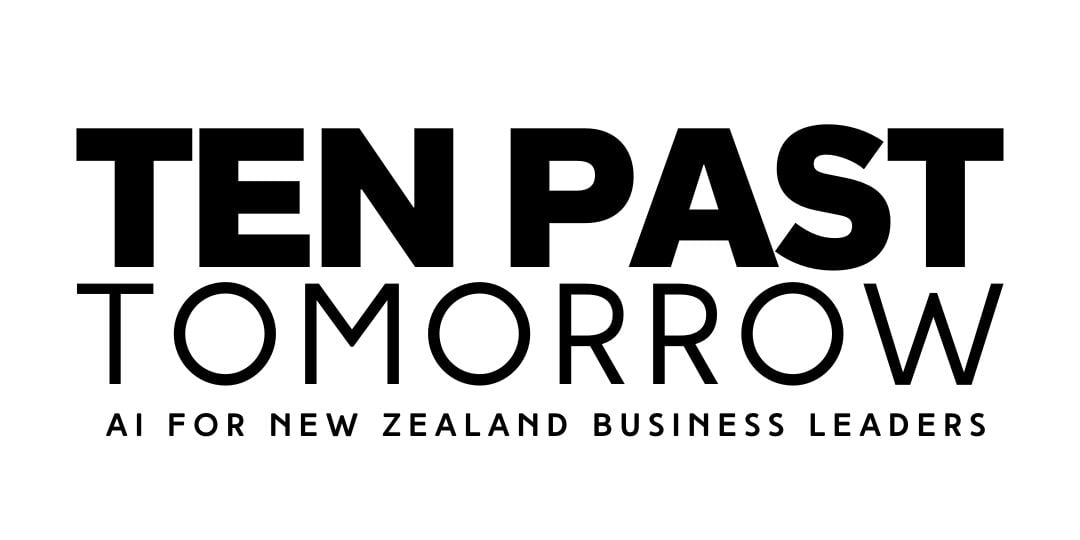How to Introduce AI to Your Employees Without Scaring Them
A common thread in a lot of my conversations with New Zealand business leaders at the moment is that they’re recognising not only the immense potential of generative AI, but at the same time acknowledging the significant concerns they have about it, particularly in relation to its impact on their employees.
As we take our first steps into this new era of generative AI becoming infused through our New Zealand businesses, it's becoming increasingly clear that the journey needs to be navigated with not just strategic acumen, but also with a healthy dose of that unique human quality: empathy.
If you’re here, reading this article, I likely don’t need to spell out to you the striking potential of AI. A recent study indicates that generative AI can bolster worker productivity by an impressive 14 percent. A statistic like this underscores the immense opportunities awaiting New Zealand businesses in the AI revolution.
Yet, alongside this promise, a murmur of concern echoes in many a New Zealand business’s corridors at the moment. The fear that generative AI might displace human effort, that it could transform the workplace into an impersonal, mechanised environment, looms large.
I think it's these very apprehensions that underline the need for an empathic approach to introducing AI in the workplace. And so I spend quite a lot of time at the moment considering how we recast AI as an ally rather than an adversary, showing how it can empower rather than eclipse human effort?
More and more I’m coming to the conclusion that the key to this lies in strategic communication and involvement with our employees; focusing the conversations on the ways AI can harmoniously integrate with existing systems and processes to enhance, not replace, human capabilities.
AI: The 'A' stands for ally, not adversary
As business leaders, we need to be careful that our narrative around AI needs is themed around 'enhancement', not ‘replacement’. The fear of replacement by generative AI is real for many New Zealand employees right now. They need to be empathically re-assured.
I think the conversations need to be based around the theme that AI is not a magic wand. It's a powerful ally that, when integrated thoughtfully, can amplify existing systems and processes.
The key to dispelling fears around AI is to show how it can bolster human effort, not replace it.
Fostering AI literacy: Open conversations and demonstrations
Open dialogue will be the cornerstone of smooth AI adoption into New Zealand businesses.
What do I mean by that? How exactly would this be done?
I suggest holding meetings and workshops to demystify generative AI, making it accessible to everyone, regardless of their technical prowess.
Early on, as you’re first broaching the subject with your people, it will help immensely to exhibit practical use cases that engage your employees by showing them how generative AI will augment their roles and make them faster/more productive/less repetitive in their daily work.
This might include using relatively non-threatening tools such as ChatGPT in your early use case demonstrations, for tasks such as crafting engaging social media content or tailoring personalised responses to customer reviews. Eg. Highlight how generative AI can trim a thirty-minute email marketing campaign down to a few minutes, not by replacing humans but by accelerating their efforts.
Open conversations like these bring generative AI to life, and present it as a friend, not a foe.
Leveraging employee feedback: Creating AI champions
Your employees should not just be end-users of generative AI, but vital contributors to its successful integration.
Encourage your people to share their ideas on potential AI applications. This will be helped enormously if you set things up well early on with the open conversations and demonstrations described in the section above, which will stimulate understanding of generative AI and enable your employees to imagine their own uses for the tools.
Whether it's creating engaging video content or rapidly transcribing data for swift updates, the range of generative AI's utility is as diverse as your team's imagination.
It’s super important that they understand that.
As with anything, when employees feel valued and respected, they are more likely to be enthusiastic advocates for generative AI, which will help to ensure its acceptance in the workplace.
 The office social committee
The office social committee
Navigating the legal and ethical landscapes
Generative AI adoption is not just about technology; it also involves legal and ethical considerations.
As your company progresses further down the pathway of weaving generative AI throughout your practices, establishing clear generative AI usage guidelines will bring to light critical data privacy regulations and security measures.
Regular training sessions from skilled and knowledgeable AI experts (possibly from outside your organisation) can provide employees with the knowledge to use AI tools responsibly, mitigating risks.
For instance, in areas like law, client confidentiality is paramount and will require specific generative AI usage rules to ensure the sanctity of client data.
Maintaining quality control: The human-AI partnership
While AI is an incredibly adept assistant, human discernment and creativity remain indispensable ingredients in ensuring the output of generative AI is of a high and consistent standard.
As mentioned several times above, I strongly recommend that as a leader, you let your teams know that AI's role is to aid, not replace them.
Repeatedly. Over and over again.
The goal is to underscore the necessity of human involvement and reiterate that AI is a tool, not a replacement for the quintessential skills, character and humanity that your employees bring to your teams and workplaces.
Conclusion: Fostering an empathic AI culture
Integrating generative AI into New Zealand businesses is a journey of transformation, a journey that calls for more than just a keen understanding of technology.
It demands a deep appreciation for the human factor within your organisation, the human element that can turn this technological shift into a tale of shared progress.
The journey to generative AI adoption, undertaken with empathy, should recast generative AI in the eyes of your employees from a perceived threat to an empowering ally.
By strategically introducing generative AI and fostering an open dialogue around it, as a business leader it’s on your shoulders to create a collaborative environment where generative AI is seen not as a challenger but a champion of human effort.
When generative AI is positioned as a tool to augment rather than replace human ingenuity, it takes on a different hue in the eyes of your employees.
Remember that as leaders of New Zealand businesses, your approach towards generative AI adoption will set the tone for your team's acceptance of this transformative technology.
Lead with empathy, understanding, and an attitude of “continuous learning”. Show your teams that at the heart of this generative AI revolution lies the potent combination of artificial intelligence and human empathy, each amplifying the other.
By embarking on this empathic approach towards generative AI adoption, you'll not only navigate the AI revolution more effectively but also lead the way in crafting a future where AI and human ingenuity harmoniously co-exist in your business.
In doing so, we’ll be driving New Zealand businesses towards new horizons of innovation and efficiency, all while cultivating work environments that value and foster both human effort and generative AI innovation.




Got something to add? Chime in below...